Occupational Safety Training for Paint Mixer Operation
99,000 ₫
Note: The above price is calculated for one person. Prices may vary depending on the number of trainees participating in the course and market fluctuations. For more accurate pricing information, please refer to the price list or contact our consultants directly.
Occupational safety is an important issue when operating a paint mixer and needs to be addressed promptly to ensure the health and safety of workers while also enhancing the reputation of businesses here. The Occupational Safety Training course is one of the effective solutions to raise awareness of accident prevention among workers when operating paint mixers.
Table of Contents
Toggle1. Overview of Paint Mixer Machines
a. What is a Paint Mixer Machine?
A paint mixer machine is a device used to blend the components of paint or other liquids, such as primer, topcoat, or various other paint types. This equipment is commonly used in the paint and decoration industry, as well as in many other industries where liquid or paint mixtures need to be prepared before use.
Paint mixers usually have a rotating shaft or impeller to ensure even and complete blending of different paint components. Modern paint mixers often feature adjustable rotation speed, mixing time, and intensity to guarantee perfect combination of the components.
Using a paint mixer ensures the quality and uniformity of the paint, producing a final product that is aesthetically pleasing and meets quality standards.

b. Operating Principle of a Paint Mixer Machine
The operating principle of a paint mixer machine is to use an impeller or rotating shaft to blend different components of paint or liquid thoroughly. This process ensures that the components combine completely, creating a homogeneous, high-quality mixture. Key steps in the operation of a paint mixer include:
- Adding components: First, paint components such as primer, topcoat, solvent systems, thinners, and other additives are poured into the mixer.
- Starting the machine: The paint mixer is activated, and the rotating shaft or impeller begins to turn.
- Combining and mixing: The shaft or impeller generates movement inside the mixing tank, pushing paint components against each other evenly. This combination and mixing process ensures a homogeneous mixture by dispersing particles or molecules of the paint components.
- Controlling the process: Paint mixers usually have controls for rotation speed, mixing time, and intensity, allowing adjustment according to the specific requirements of the paint or liquid product.
- Quality inspection: After mixing, the paint mixture is checked to ensure quality and uniformity. Adjustments can be made if necessary to achieve the desired characteristics.

c. Industries Using Paint Mixer Machines
Paint mixer machines are used in a variety of industries, including:
- Paint and decoration industry: This is the main industry using paint mixers to prepare and produce primers, topcoats, and other types of paint for decorative and protective coatings.
- Automotive manufacturing: In automobile production, paint mixers are used to prepare paints and coatings for vehicle parts such as body panels, interiors, and other components.
- Woodworking and furniture industry: Furniture manufacturers use paint mixers to prepare paints and finish wood surfaces, producing aesthetically pleasing and durable furniture and decorative wood products.
- Industrial manufacturing: In various industrial sectors, paint mixers are used to prepare and mix paints or liquids for production, including machinery, electronics, plastic products, and other industries.
- Construction materials industry: Companies producing construction materials, such as wall paints and mortars, also use paint mixers to create their final products.
2. Overview of Safety Training for Operating Paint Mixer Machines
a. What is Occupational Safety Training?
- Occupational safety training for operating paint mixer machines is a course designed to equip workers with awareness and methods to prevent workplace accidents. Workers directly operating paint mixers belong to Group 3.
- The training course helps workers identify and avoid hazards, reducing the risk of workplace accidents.
REGISTER FOR OCCUPATIONAL SAFETY TRAINING
b. Training Duration
Initial safety training duration:
- Total training time is at least 24 hours, including testing.
- 8 hours of theory on safety policies and labor hygiene laws
- 8 hours of basic safety and labor hygiene theory
- 4 hours of specialized training theory
- 2 hours of practical training on specialized content
- 2 hours of theoretical final exam
The training center will distribute the sessions depending on workers’ schedules, typically in 6 sessions over 3 days, provided the company can arrange continuous study time.
Periodic safety training:
- Before the occupational safety card expires, workers seeking renewal must undergo periodic safety training, with periodic training time of at least 50% of the initial training duration.
Note: Total periodic safety training lasts at least 12 hours, including tests. After completing the course and passing the exam, workers will have their occupational safety card renewed.
c. Training Content
| No. | TRAINING CONTENT | TRAINING HOURS | |||
| Total | Including | ||||
| Theory | Practice | Exam | |||
| I | Safety policies and labor hygiene laws | 8 | 8 | 0 | 0 |
| 1 | Overview of legal documents and regulations on safety and labor hygiene. | 6 | 6 | ||
| 2 | Standards and technical regulations on occupational safety and hygiene. | 1 | 1 | ||
| 3 | Specific regulations from authorities regarding safety and labor hygiene for construction, expansion, or renovation of facilities, and usage, storage, and inspection of equipment and materials with strict safety requirements. | 1 | 1 | ||
| II | Basic knowledge of occupational safety and hygiene | 8 | 8 | 0 | 0 |
| 1 | Basic knowledge of hazards and harmful factors at the workplace. | 4 | 4 | ||
| 2 | Methods for improving working conditions. | 1 | 1 | ||
| 3 | Safety culture in production and business. | 1 | 1 | ||
| 4 | Rights and obligations of employers and employees; safety policies for workers; roles and duties of safety networks and officers. | 1 | 1 | ||
| 5 | Safety rules, signage, instructions, use of protective equipment and personal protective equipment; accident first aid skills and occupational disease prevention. | 1 | 1 | ||
| III | Specialized training content | 6 | 4 | 2 | 0 |
| Comprehensive knowledge about machines, devices, hazardous substances; risk assessment and management; safe work procedures with machines, devices, and hazardous substances. | 6 | 4 | 2 | ||
| IV | Final exam on safety training content | 2 | 2 | 0 | 0 |
| Total | 24 | 22 | 2 | ||
See more training content of 6 groups
d. Occupational Safety Card
After completing the safety training and passing the exam, workers will be issued an occupational safety card (commonly called Group 3 safety certificate).
The Group 3 safety card shows the worker’s full name, date of birth, job, and specific work environment, along with training hours, a red seal, and signature confirming completion of the course.
According to Clause 2 of Article 24, Decree 44/2016/ND-CP, there are two cases:
- If there is an employment contract between the employer and employee, the employer must sign, stamp, and certify the Group 3 safety card after the worker completes the training and passes the exam.
- If the worker is freelance or seasonal without an employment contract, the training unit must sign, stamp, and certify the safety card after the worker completes the training and passes the exam.

3. Hazards When Operating a Paint Mixer
Operating a paint mixer can involve several hazards, especially if safety rules are not followed. Here are some common hazards when operating a paint mixer:
- Using incorrect documents or not carefully reading the user manual of the paint mixer can lead to improper operation and the risk of accidents.
- If the paint mixer is not regularly maintained or checked for repairs when needed, it can result in damage or malfunction, causing operational issues.
- Paint and other liquids often contain flammable or organic substances, which can pose fire and explosion risks if not handled properly. The paint mixer must be isolated and protected to prevent dangerous situations.
- Paint mixers use rotating shafts or blades for mixing, and failure to follow safety rules may lead to injury or accidents.
- Operators should always use personal protective equipment (PPE), such as safety glasses, gloves, and protective clothing, to ensure eye, hand, and body safety.
- Mixing too fast or too vigorously can cause paint or liquids to splatter from the mixing tank, posing a risk of coating people or the environment.
- Using inappropriate or unsafe thinners can create health hazards for operators or have negative environmental impacts.

4. Measures to Prevent Occupational Accidents When Operating a Paint Mixer
To prevent occupational accidents while operating a paint mixer, a series of safety measures must be implemented. Here are some important measures:
- Training: Ensure employees are thoroughly trained on how to operate the paint mixer safely. Training includes understanding potential hazards, safe work procedures, and the proper use of PPE.
- Use of PPE: Ensure all paint mixer operators wear PPE such as safety glasses, gloves, protective clothing, and helmets to protect eyes, hands, and body from risks.
- Regular maintenance: Perform routine maintenance on the paint mixer to ensure safe and efficient operation. Maintenance includes checking shafts, blades, electrical systems, and other mechanical components.
- Pre-operation inspection: Before using the paint mixer, thoroughly inspect the machine to ensure there is no damage or malfunction and that all components function correctly.
- Chemical management: Store and handle chemicals, such as paints and solvents, according to safety regulations. Ensure they are stored safely and used properly.
- Fire and explosion risk management: If using flammable or organic liquids during mixing, ensure the mixer and work area are isolated and protected from fire or explosion hazards.
- Monitoring the mixing process: Supervise the paint mixing process to ensure it is conducted safely without spills or splashes.
- Emergency preparedness plan: Train workers on emergency procedures, including evacuation and the use of firefighting or first aid equipment.
- Compliance with safety rules: Follow the safety rules and operating instructions of the paint mixer. Do not skip safety measures and stay focused during work.
- Periodic inspection of the paint mixer to detect safety issues such as wear or mechanical faults early, reducing the risk of occupational accidents.
5. Benefits of Occupational Safety Training
An Toàn Nam Việt provides your business with the following benefits after completing occupational safety training courses in accordance with Decree 44/2016/ND-CP on labor safety and hygiene for companies and enterprises:
- Workers can recognize potential occupational hazards and take preventive measures to avoid accidents.
- Your business can establish risk prevention measures in production, operation, and maintenance processes.
- Reduce costs associated with workplace safety risks.
- Uninterrupted production increases labor productivity and product quality.
- Ensure compliance with labor safety laws, avoiding legal risks.
- Enhance credibility and professionalism, thereby elevating your company’s brand.
Nam Việt’s training courses help prevent external hazards from affecting individuals, allowing them to avoid dangers that could lead to injury or even death.
REGISTER FOR OCCUPATIONAL SAFETY TRAINING
6. Customer Feedback After Completing Training
An Toàn Nam Việt has many years of experience supporting businesses across Vietnam, especially in the southern provinces. This responsibility is very valuable to us, which is why our Occupational Safety Training is increasingly professional. Our growth is fueled by positive feedback and constructive suggestions from our business partners. Below are some testimonials from our clients:
See more customer interviews after using our services at An Toàn Nam Việt
7. An Toàn Nam Việt’s Occupational Safety Training Capability
An Toàn Nam Việt is a leading center for quality occupational safety training in Vietnam. Training sessions are conducted continuously at factories, workshops, and construction sites nationwide (all 63 provinces).
REGISTER FOR OCCUPATIONAL SAFETY TRAINING
Occupational safety training license
- An Toàn Nam Việt has been inspected and certified by the Department of Safety under the Ministry of Labor, Invalids and Social Affairs for the capacity to conduct occupational safety and hygiene training, strengthening our credentials.

Training materials and lectures
- Before being used in occupational safety training courses, materials are reviewed to ensure accuracy and effectiveness.
- Instructors follow Nam Việt’s standardized teaching methods, developed by safety experts, to maximize knowledge retention for trainees.
Facilities
- Controlling classroom conditions enhances teaching efficiency and knowledge absorption.
- Our training facilities provide spacious classrooms meeting standards for area, lighting, and training equipment.
8. Nationwide Reputable Occupational Safety Training Center
At An Toàn Nam Việt, we prioritize occupational safety training. Educating workers to protect themselves is part of building the nation.
We carefully prepare all training details, from tools, teaching equipment, curriculum, materials, audio, and lighting.
Our instructors are experts with years of experience and research on hazard identification across industries and preventive measures.
Lectures are practical, vivid, and easy to understand, allowing workers to learn comfortably. Content always complies with Decree 44/2016/ND-CP.
Workers learn hazard prevention measures and self-protection, applying them appropriately in real work situations.
Our training center proudly provides professional and reputable occupational safety training with the following advantages:
- Competitive training costs with ensured quality.
- Flexible training schedules aligned with company production.
- Fast certification process in compliance with legal regulations.
- Experienced instructors with many years in the field.
- Controlled classrooms enhance teaching efficiency and knowledge absorption.
- Lectures are tailored to occupational safety in enterprises.
- Dedicated and professional service for accurate and quick client support.

9. Additional Occupational Safety Training Resources
- Occupational safety materials for handheld paint mixer operation
- Occupational safety training materials set
- Occupational safety training test set
- Occupational safety multiple-choice test for paint mixer operation
- Occupational safety training slides for handheld paint mixer operation
1 review for Occupational Safety Training for Paint Mixer Operation
No comments yet

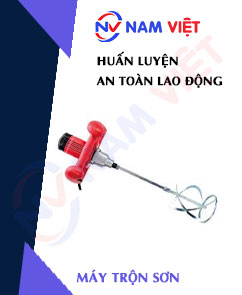
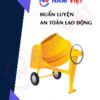
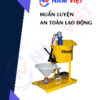




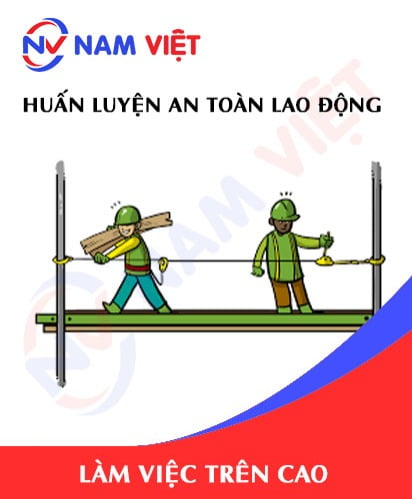





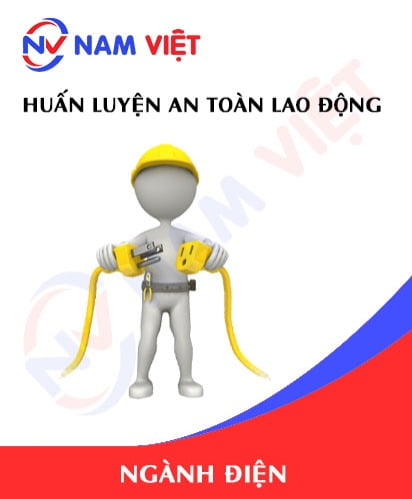
phanminhhang341
Good labor safety unit